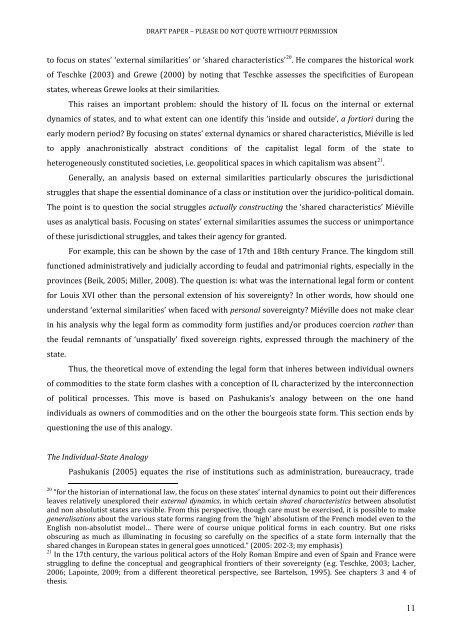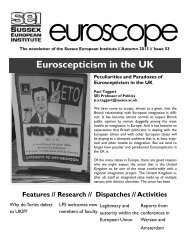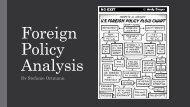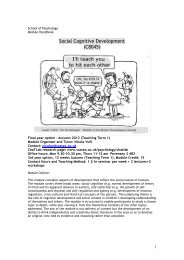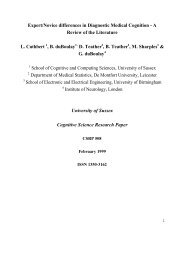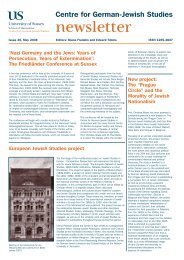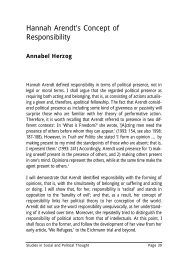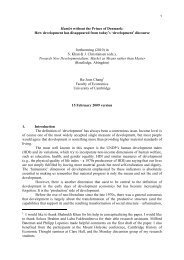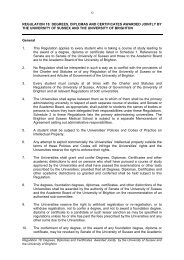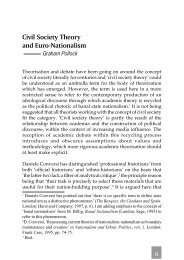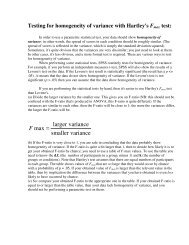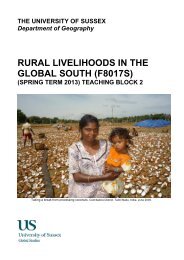Historical Materialism and International Law - University of Sussex
Historical Materialism and International Law - University of Sussex
Historical Materialism and International Law - University of Sussex
Create successful ePaper yourself
Turn your PDF publications into a flip-book with our unique Google optimized e-Paper software.
DRAFT PAPER – PLEASE DO NOT QUOTE WITHOUT PERMISSION<br />
to focus on states’ ‘external similarities’ or ‘shared characteristics’ 20 . He compares the historical work<br />
<strong>of</strong> Teschke (2003) <strong>and</strong> Grewe (2000) by noting that Teschke assesses the specificities <strong>of</strong> European<br />
states, whereas Grewe looks at their similarities.<br />
This raises an important problem: should the history <strong>of</strong> IL focus on the internal or external<br />
dynamics <strong>of</strong> states, <strong>and</strong> to what extent can one identify this ‘inside <strong>and</strong> outside’, a fortiori during the<br />
early modern period? By focusing on states’ external dynamics or shared characteristics, Miéville is led<br />
to apply anachronistically abstract conditions <strong>of</strong> the capitalist legal form <strong>of</strong> the state to<br />
heterogeneously constituted societies, i.e. geopolitical spaces in which capitalism was absent 21 .<br />
Generally, an analysis based on external similarities particularly obscures the jurisdictional<br />
struggles that shape the essential dominance <strong>of</strong> a class or institution over the juridico-political domain.<br />
The point is to question the social struggles actually constructing the ‘shared characteristics’ Miéville<br />
uses as analytical basis. Focusing on states’ external similarities assumes the success or unimportance<br />
<strong>of</strong> these jurisdictional struggles, <strong>and</strong> takes their agency for granted.<br />
For example, this can be shown by the case <strong>of</strong> 17th <strong>and</strong> 18th century France. The kingdom still<br />
functioned administratively <strong>and</strong> judicially according to feudal <strong>and</strong> patrimonial rights, especially in the<br />
provinces (Beik, 2005; Miller, 2008). The question is: what was the international legal form or content<br />
for Louis XVI other than the personal extension <strong>of</strong> his sovereignty? In other words, how should one<br />
underst<strong>and</strong> ‘external similarities’ when faced with personal sovereignty? Miéville does not make clear<br />
in his analysis why the legal form as commodity form justifies <strong>and</strong>/or produces coercion rather than<br />
the feudal remnants <strong>of</strong> ‘unspatially’ fixed sovereign rights, expressed through the machinery <strong>of</strong> the<br />
state.<br />
Thus, the theoretical move <strong>of</strong> extending the legal form that inheres between individual owners<br />
<strong>of</strong> commodities to the state form clashes with a conception <strong>of</strong> IL characterized by the interconnection<br />
<strong>of</strong> political processes. This move is based on Pashukanis’s analogy between on the one h<strong>and</strong><br />
individuals as owners <strong>of</strong> commodities <strong>and</strong> on the other the bourgeois state form. This section ends by<br />
questioning the use <strong>of</strong> this analogy.<br />
The Individual-State Analogy<br />
Pashukanis (2005) equates the rise <strong>of</strong> institutions such as administration, bureaucracy, trade<br />
20 “for the historian <strong>of</strong> international law, the focus on these states’ internal dynamics to point out their differences<br />
leaves relatively unexplored their external dynamics, in which certain shared characteristics between absolutist<br />
<strong>and</strong> non absolutist states are visible. From this perspective, though care must be exercised, it is possible to make<br />
generalisations about the various state forms ranging from the ‘high’ absolutism <strong>of</strong> the French model even to the<br />
English non-absolutist model… There were <strong>of</strong> course unique political forms in each country. But one risks<br />
obscuring as much as illuminating in focusing so carefully on the specifics <strong>of</strong> a state form internally that the<br />
shared changes in European states in general goes unnoticed.” (2005: 202-3; my emphasis)<br />
21 In the 17th century, the various political actors <strong>of</strong> the Holy Roman Empire <strong>and</strong> even <strong>of</strong> Spain <strong>and</strong> France were<br />
struggling to define the conceptual <strong>and</strong> geographical frontiers <strong>of</strong> their sovereignty (e.g. Teschke, 2003; Lacher,<br />
2006; Lapointe, 2009; from a different theoretical perspective, see Bartelson, 1995). See chapters 3 <strong>and</strong> 4 <strong>of</strong><br />
thesis.<br />
11


